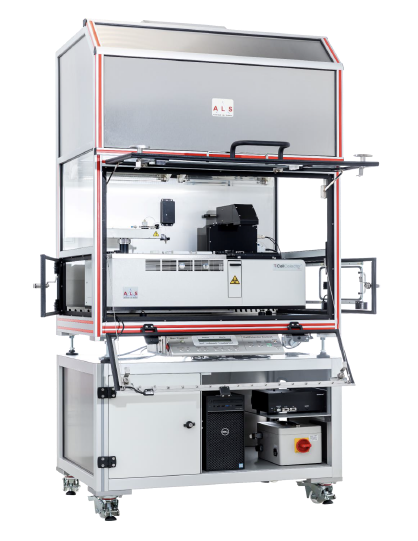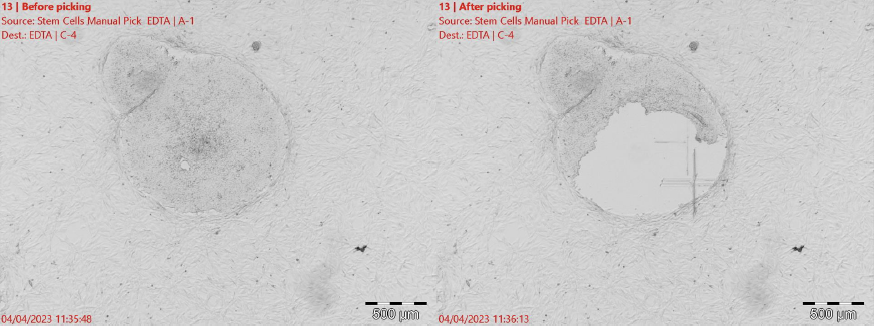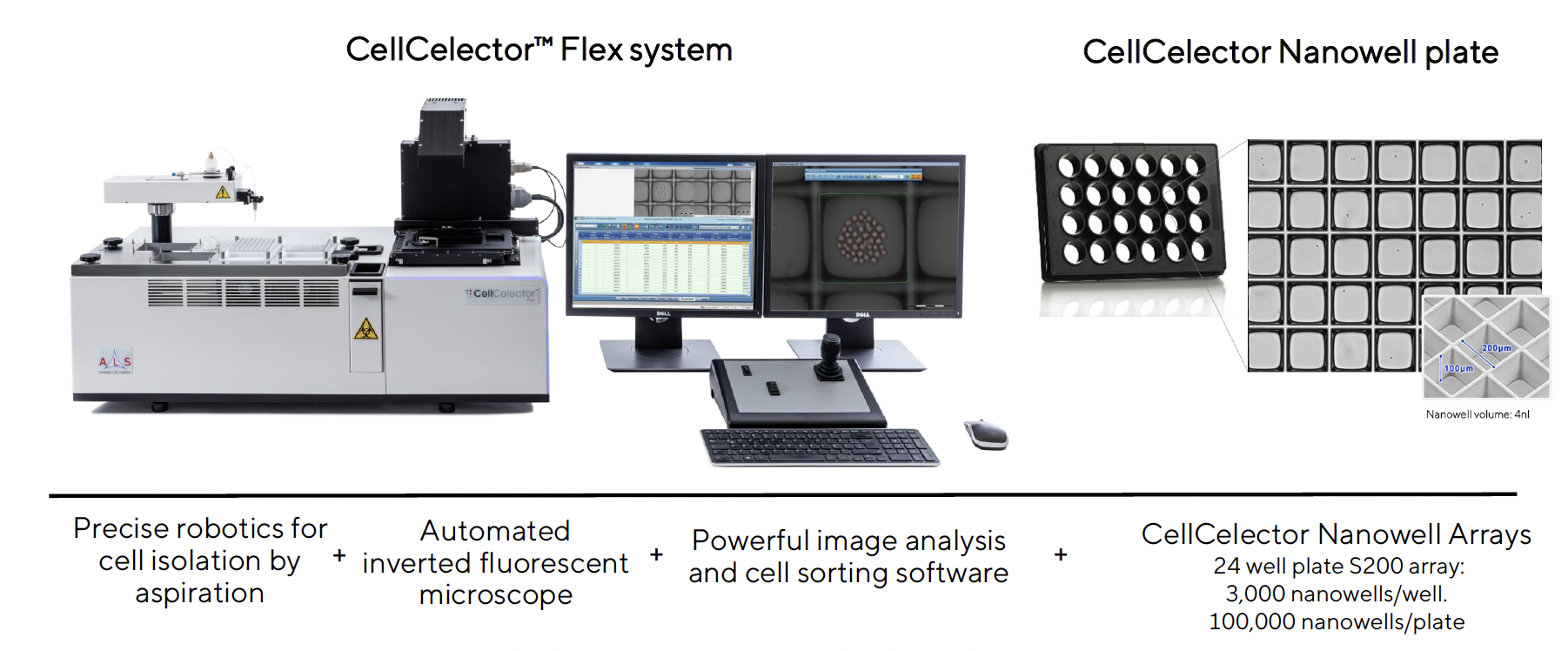
Exploring the CellCelector's Capabilities in Cellular Research
Our hands-on experience with this innovative technology
Our lab, The Gates Center for Regenerative Medicine, recently had the opportunity to evaluate the CellCelector™, an advanced automated cell-picking system with various applications in cellular research.
We conducted three experiments to evaluate the system's performance, ease of use, and versatility.
Stem Cell Colony Picking
iPSC Single Cell Cloning with CellCelector Nanowell Arrays
Organoid Picking and Transfer
In this post, we will share our experience with this innovative technology and discuss the key aspects of each experiment.
This work wouldn't have been possible without assistance from Alejandra Young, Angela Garcia, and Mark Jenesse from Sartorius and the generous gift provided to the Roop, Bilousova, and Kogut Laboratories by The Epidermolysis Bullosa Research Partnership (EBRP).
TL;DR
The CellCelector™ Flex System is a versatile cell isolation platform with various applications in cellular research.
The Gates Center for Regenerative Medicine utilized the system to demonstrate excellent performance in stem cell colony picking, iPSC single-cell cloning, and organoid picking and transfer.
By automating complex workflows and offering precision picking capabilities, the CellCelector™ system holds great promise for enhancing the efficiency and accuracy of cellular research at the Gates Center and labs worldwide.
The Epidermolysis Bullosa Research Partnership (EBRP) supports this research, aiming to find treatments for rare skin and connective tissue diseases like Epidermolysis Bullosa (EB).
Product Overview
The CellCelector™ Flex System is a cutting-edge, easy-to-use, fast, reliable, and versatile cell isolation platform with integrated traceability.

Sterility + Temperature, CO2, and Humidity control
This powerful technology automates cell selection for picking induced pluripotent stem cells (iPSCs), stem cell colonies, and organoids, working with various cell types and conditions. By offering significant cost savings on consumables, media, and incubator storage space, the CellCelector™ Flex System is an attractive choice for laboratories worldwide.

Key components of the platform include a deck tray for destination vessels and buffer, a motorized high-precision X/Y stage with autofocus, an inverted microscope with a CCD camera, and a retrieval arm with a high-precision robot.

The CellCelector™ Flex Software aligns with experimental workflows and offers automated picking quality control with before and after pictures. The system has exchangeable modules for various applications, such as single-cell picking using glass capillaries, scrape picking with reusable stainless-steel tips, and semi-solid media picking with disposable plastic tips.

The platform has demonstrated success in stem cell colony picking, iPSC single-cell cloning, and organoid picking. The CellCelector™ Flex System also offers traceability for all clones from single-cell clones in 96-well plates and ensures high cell survival rates with its gentle cell detachment process.
Experiment 1: Stem Cell Colony-Picking Experiment
The primary goal of our stem cell colony-picking experiment was to assess the CellCelector's ability to pick colonies of varying sizes and proximity efficiently and accurately.

The experiment involved:
Imaging: We imaged a 6-well plate at 4x magnification, enabling us to run an automated colony detection and selection analysis.
Manual Selection: Using the Click and Pick method, we manually selected colonies and areas of interest directly from the live image on the CellCelector™ software.
Automatic Picking: The system automatically picked the chosen colonies using a traditional, gentle scrape method with a 500 µm stainless steel ScrapeTip™ capillary.
Picking Various Sizes and Proximities: We picked small, medium, and large colonies, multiple portions of the same colony, and closely neighboring colonies to test the system's precision and versatility.
Dissociation Treatment(s): After treating colonies with EDTA, we picked additional colonies using the scraping tool to evaluate the system's performance with different cell detachment conditions.
Colony Deposition: We deposited the picked colonies into two separate 12-well plates to further assess the CellCelector's accuracy and efficiency.
Experimental Conclusions:
The CellCelector™ demonstrated exceptional performance in our stem cell colony-picking experiment, proving its value as a reliable and versatile tool for various cellular research applications. With its automated features, precise picking capabilities, and compatibility with different detachment conditions, the CellCelector™ holds great promise for enhancing the efficiency and accuracy of cellular research for the Gates Center.




Experiment 2: iPSC Single Cell Cloning with CellCelector Nanowell Arrays

In addition to the stem cell colony-picking experiment, we also conducted an induced pluripotent stem cell (iPSC) single-cell cloning experiment using the CellCelector™ system. For this experiment, we utilized the CellCelector™ Nanowell Arrays, specifically the 24-well plate S200 array, which features 3,000 nanowells per well and a total of 100,000 nanowells per plate.
The experiment was carried out over several days and involved the following steps:

Day 0:
Plate Coating: Coated plates with Vitronectin for iPSC culture.
Cell Seeding: Used engineered iPSCs (Wasabi, tdTomato, iRFP670).
Plate Scanning: Scanned plate in bright field, 10x magnification.
Single Cell Detection: Identified ~1,000 single cells in nanowells.

Day 1:
Media Change: Replaced the culture medium in the plate.
Plate Scanning: Scanned the plate again at 10x magnification in bright field, Wasabi, tdTomato, and iRFP670 channels to identify modified clones.
Day 3:
Plate Scanning: Scanned the plate again at 10x magnification in bright field, Wasabi, tdTomato, and iRFP670 channels to confirm modified clones.
Clone Detection and Ranking: Analyzed the scans to detect and rank clones.
Clone Selection: Reviewed the results and selected around 80 viable clones to be picked.
Cell Detachment Evaluation: Tested detachment conditions (EDTA, Accutase) and incubation times for optimization.
Cell Picking: We used the CellCelector™ system to pick the selected single-cell clones and transfer them to a 96-well plate.

Experimental Conclusions:
The iPSC single-cell cloning experiment demonstrated the CellCelector's exceptional capabilities in handling complex workflows and precision in identifying and picking single cells. The use of CellCelector™ Nanowell Arrays further showcased the system's adaptability to various applications, enabling us to identify, rank, and pick single-cell clones efficiently and accurately.
The CellCelector™ system has proven invaluable for our cellular research by simplifying and streamlining the iPSC cloning process.

Experiment 3: Organoid Picking and Transfer with AggreWell Plates

In a third experiment, we explored the capabilities of the CellCelector™ system to handle organoid picking and transfer from AggreWell plates to 96 well plates. AggreWell 800 and AggreWell 400 were used to assess the system's efficiency and accuracy in organoid manipulation.
Key Findings:
Fast and Easy Automated Image Analysis: The CellCelector™ system provided a quick and straightforward automated image analysis using AggreWell plates, streamlining the organoid picking process.
Picking from AggreWell 800 with 500 µm Plastic Tip: We used a 500 µm plastic tip to pick organoids from AggreWell 800. Although the outer diameter of the tip was larger than the AggreWell, preventing the tip from reaching the bottom of the well, the picking was still successful. However, neighboring organoids may be disturbed during the process.

While picking organoids was efficient, organoids from neighboring wells were occasionally perturbed. Picking from AggreWell 800 and 400 with 220 µm Glass Capillary: We used a 220 µm glass capillary to pick organoids from AggreWell 800 and AggreWell 400. The CellCelector system demonstrated 100% picking and transfer accuracy for small (150μm) to large (310μm) organoids, with only 1 µl of volume required for each pick, alleviating the need for a rinse well.

Fast and Easy Automated Image Analysis and Picking: The CellCelector system provided rapid and straightforward automated image analysis and picking of organoids from the U-bottom plate.

Experimental Conclusions:
The third experiment showcased the CellCelector™ system's ability to efficiently and accurately pick and transfer organoids using Aggrewell and U-Bottom plates. The system's adaptability to different well formats, tip sizes, and picking volumes highlights its potential for a wide range of applications in organoid research. This experiment further underscores the CellCelector™ system as a valuable tool for automating complex cellular workflows and streamlining cell manipulation processes in our lab.
Final Conclusions
Overall, our experience with the CellCelector™ system demonstrated its versatility, accuracy, and efficiency in various cellular research applications, including stem cell colony picking, iPSC single-cell cloning, and organoid picking and transfer. By automating complex workflows and offering precision picking capabilities, the CellCelector™ system holds great promise for enhancing the efficiency and accuracy of cellular research at the Gates Center and labs worldwide.
Epidermolysis Bullosa Research Partnership (EBRP)
The Gates Center's ability to conduct research with the CellCelector™ has been made possible thanks to the support of donors like the Epidermolysis Bullosa Research Partnership (EBRP). Led by Michael Hund, the EBRP is dedicated to finding treatments and cures for Epidermolysis Bullosa (EB), a devastating skin condition that affects visible skin, connective tissue, and internal organs.
The EBRP's innovative approach, Venture Into Cures, functions as a mutual fund for potential EB treatments. They identify and fund the most promising research projects in exchange for a financial interest in the work carried out by universities or businesses. The returns generated from successful projects are reinvested into further EB research, allowing each dollar invested to multiply its impact continuously.
With 95% of rare diseases currently lacking approved treatments, EBRP's model aims to change this reality. EB serves as a perfect case study for its approach, as it needs more funding due to its rarity and low public awareness. As a dermatological disease with visible physical indicators, the effects of treatments can be observed and studied more quickly. The work EBRP has supported has already paved numerous pathways toward a cure. They are at the forefront of not only their unique business model but also innovative gene therapies that hold the potential to help many other diseases find their cures. Donors like the EBRP drive innovation and accelerate the development of life-changing therapies by supporting research efforts at institutions like the Gates Center.
